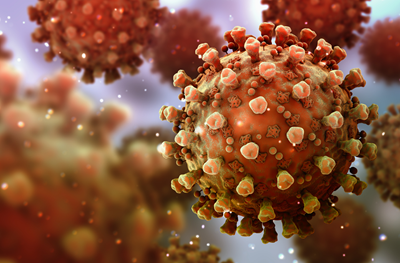Infection
Penn Study on Immune Response to COVID Breakthrough Infections

PHILADELPHIA—While COVID-19 breakthrough infections—a SARS-CoV-2 infection that occurs after receiving COVID-19 vaccines—can occur, for healthy individuals with vaccine-induced immunity, these breakthrough infections do not often cause severe disease. There has been limited research to uncover why these breakthrough infections do not lead to severe infections, until now. A team led by researchers in the Perelman School of Medicine at the University of Pennsylvania identified potential clues that may enhance current vaccines through a detailed analysis of immune responses to breakthrough infections, published recently in Nature Immunology.
Immunologists generally have limited data on the dynamics of the immune response during breakthrough infections. In this study, the researchers set out to remedy that shortcoming for SARS-CoV-2 by cataloguing immune responses to Omicron breakthrough infections in unprecedented detail.
In their study, researchers examined the responses of B-cells (which produce antibodies) and T-cells (which can kill infected cells directly) in fully vaccinated individuals who became infected with SARS-CoV-2 during the early part of the Omicron wave. They found that both B-cell and T-cell responses to these breakthrough infections are enhanced in vaccinated people, compared to unvaccinated people, generating the necessary “immunological memory” to prevent more severe infection. The results also suggest that vaccine-primed memory T cells have an early-responder role that may be critical for preventing severe COVID-19.
“By identifying the contributions of memory B cells and memory T cells early in breakthrough infections, we now have clues to bolster the current vaccines and help further prevent the spread and impact of breakthrough infections,” said study senior author John Wherry, PhD, Richard and Barbara Schiffrin President’s Distinguished Professor and chair of Systems Pharmacology & Translational Therapeutics at Penn.

The SARS-CoV-2 vaccines were designed to provide durable protection against the virus by eliciting immune responses—in particular antibodies targeting its outer “spike” protein—specifically the spike protein of the original Wuhan strain. However, as the pandemic progressed, new SARS-CoV-2 variants with altered spike proteins emerged, including the Omicron variant.
Omicron and its subvariants quickly became dominant, starting in late 2021, because they were much more transmissible—but also evaded antibodies more than prior variants, the world saw an increase in so-called breakthrough infections.
The study results also showed that in subjects who had been vaccinated, breakthrough SARS-CoV-2 infection triggered a coordinated, spike protein-specific response, featuring antibodies, antibody-producing B cells, and activated T cells—a more comprehensive and potent response to infection than was seen in unvaccinated subjects. Moreover, these activated T cells appeared early and may be component of the immune response that prevents these breakthrough infections from progressing to cause severe disease. Instead, most breakthrough infections in fully vaccinated healthy people do not lead to hospitalization or death.
“Our study wasn’t designed to test this, but we think it’s likely that this early memory T-cell activation is critical for limiting viral replication, and thus limiting the severity of disease, in vaccinated individuals,” said Mark Painter, PhD, a postdoctoral research fellow in the Wherry Laboratory and the study’s first author.
Support for the research was provided by the National Institutes of Health (AI105343,
AI082630, AI108545, AI155577, AI149680, AI152236, HL143613, T32 AR076951-01, T32 CA009140, T32-GM007170, U19AI082630, K08CA230157, 75N9301900065), in addition to institutional and private support.
Penn Medicine is one of the world’s leading academic medical centers, dedicated to the related missions of medical education, biomedical research, excellence in patient care, and community service. The organization consists of the University of Pennsylvania Health System and Penn’s Raymond and Ruth Perelman School of Medicine, founded in 1765 as the nation’s first medical school.
The Perelman School of Medicine is consistently among the nation’s top recipients of funding from the National Institutes of Health, with $550 million awarded in the 2022 fiscal year. Home to a proud history of “firsts” in medicine, Penn Medicine teams have pioneered discoveries and innovations that have shaped modern medicine, including recent breakthroughs such as CAR T cell therapy for cancer and the mRNA technology used in COVID-19 vaccines.
The University of Pennsylvania Health System’s patient care facilities stretch from the Susquehanna River in Pennsylvania to the New Jersey shore. These include the Hospital of the University of Pennsylvania, Penn Presbyterian Medical Center, Chester County Hospital, Lancaster General Health, Penn Medicine Princeton Health, and Pennsylvania Hospital—the nation’s first hospital, founded in 1751. Additional facilities and enterprises include Good Shepherd Penn Partners, Penn Medicine at Home, Lancaster Behavioral Health Hospital, and Princeton House Behavioral Health, among others.
Penn Medicine is an $11.1 billion enterprise powered by more than 49,000 talented faculty and staff.
